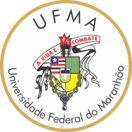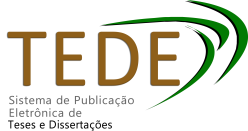| Compartilhamento |


|
Use este identificador para citar ou linkar para este item:
https://tedebc.ufma.br/jspui/handle/tede/6173| Tipo do documento: | Dissertação |
| Título: | Síntese e caracterização do cristal Dicloro (L-histidina) cobre(II) |
| Título(s) alternativo(s): | Synthesis and characterization of Dichloro(L-histidine) copper(II) crystal |
| Autor: | ABREU, Kamila Rodrigues  |
| Primeiro orientador: | SANTOS, Adenilson Oliveira dos |
| Primeiro membro da banca: | SANTOS, Adenilson Oliveira dos |
| Segundo membro da banca: | SOUSA, Francisco Ferreira de |
| Terceiro membro da banca: | NOGUEIRA, Carlos Emídio Sampaio |
| Resumo: | Os complexos metálicos têm sido amplamente estudados devido suas diversas aplicações, tanto na área tecnológica quanto biológica. Entre esses complexos, encontram-se os formados por cobre (II) e L-histidina. Nesse contexto, o cristal Dicloro (L-histidina) cobre (II) foi sintetizado através do método de evaporação lenta do solvente. O cristal foi obtido na proporção 1:1 e caracterizado por espectroscopia na região do ultravioleta-visível (UV-vis), cálculos computacionais pela teoria do funcional da densidade (DFT), difração de raios X (DRX), espectroscopia no infravermelho por transformada de Fourier (FT-IR), espectroscopia Raman, termogravimetria (TG), análise térmica diferencial (DTA), calorimetria exploratória diferencial (DSC) e atividade antimicrobiana. Por meio do UV-vis foi possível observar que o cristal apresenta uma banda com absorção máxima em um comprimento de onda 600 nm, atribuída as transições d-d que é comum em complexos de cobre (II). A partir da DRX com refinamento pelo método Rietveld, confirmou-se que o cristal cristaliza-se com 4 moléculas por célula unitária, estrutura ortorrômbica e grupo espacial P212121(D2 4 ), com parâmetros de rede a= 9,992 (7) Å, b= 5,937 (9) Å, c= 17,472 (6) Å e V= 1036,3 (6) Å3 . A estrutura otimizada do complexo foi calculada por meio da DFT, da qual foi possível obter a reatividade química do complexo a partir dos orbitais de fronteiras HOMO e LUMO, além do mapa de potencial eletrostático (MEP), assim como os índices de reatividade química, que mostraram que esse é estável. Conforme os resultados das técnicas TG-DTA, o complexo apresentou dois eventos térmicos referentes à perda de massa, em que o primeiro foi atribuído a fusão seguido da decomposição, e o último evento referente à oxidação do metal. Aferiu-se pela curva DSC que a fusão do cristal ocorre em aproximadamente 477 K. Com os espectros de FT-IR e Raman (teórico e experimental) foi possível realizar as atribuições e comparações dos modos vibracionais do cristal. Por meio dos resultados de DRX em função da temperatura, em concordância com as técnicas térmicas analíticas, aferiu-se que o cristal possui estabilidade estrutural térmica até aproximadamente 463 K. Como base nos estudos da avaliação da atividade antimicrobiana observou-se que o cristal Dicloro (L-histidina) cobre (II) apresentou uma boa atividade biocida contra cepa de bactéria Gram (+) Staphylococcus aureus. |
| Abstract: | Metal complexes have been widely studied due to their diverse applications, both in the technological and biological fields. Among these complexes are those formed by copper (II) and L-histidine. In this context, this work aimed to synthesize the Dichloro (L-histidine) copper (II) crystal by the slow evaporation solvent method. The crystal was obtained in a 1:1 ratio and characterized by ultraviolet-visible spectroscopy (UV-vis), computational calculations by density functional theory (DFT), X-ray diffraction (XRD), Fourier-transform infrared spectroscopy (FT-IR), Raman spectroscopy, thermogravimetry-differential thermal analysis (TG-DTA), differential scanning calorimetry (DSC), and the antimicrobial activity. Through UV-vis it was possible to observe that the crystal presents a band with maximum absorption at a wavelength of 600 nm, attributed to the common d-d transitions in copper (II) complexes. The XRD with Rietveld method refinement confirmed that the synthesized crystal crystallizes with 4 molecules per unit cell, orthorhombic structure and P212121(D2 4 ) space group, with lattice parameters a= 9.992 (7) Å, b= 5.937 (9) Å, c= 17.472 (6) Å e V= 1036.3 (6) Å3. The optimized crystal structure was calculated using DFT, making it possible to obtain the chemical reactivity of the complex from the HOMO and LUMO border orbitals, the molecular electrostatic potential (MEP), as well as the chemical reactivity indices, which showed that the crystal is stable. According to the results of the TG-DTA techniques, the complex presented two thermal events, the first was attributed to fusion followed by decomposition, and the second event was related to the oxidation of the material. It was verified by the DSC curve that the crystal melting occurs at approximately 475 K. With the theoretical and experimental FT-IR and Raman spectra, it was possible to carry out the attributions and comparisons of the vibrational modes of the crystal. Through the results of XRD as a function of temperature, in agreement with the analytical thermal techniques, it was verified that the crystal has thermal structural stability up to approximately 463 K. Based on the studies of the evaluation of the antimicrobial activity, it was observed that the crystal Dichloro (L-histidine) copper (II) showed good biocidal activity against Gram (+) Staphylococcus aureus bacteria strain. |
| Palavras-chave: | complexo metálico; cobre; Histidina; difração de raios X. metal complex; copper; histidine; x-ray diffraction. |
| Área(s) do CNPq: | Ciências Exatas e da Terra |
| Idioma: | por |
| País: | Brasil |
| Instituição: | Universidade Federal do Maranhão |
| Sigla da instituição: | UFMA |
| Departamento: | COORDENAÇÃO DO CURSO DE ENGENHARIA DE ALIMENTOS/COEA |
| Programa: | PROGRAMA DE PÓS-GRADUAÇÃO EM CIÊNCIA DOS MATERIAIS/CCSST |
| Citação: | ABREU, Kamila Rodrigues. Síntese e caracterização do cristal Dicloro (L-histidina) cobre(II). 2021. 79 f. Dissertação (Programa de Pós-Graduação em Ciência dos Materiais/CCSST) - Universidade Federal do Maranhão, Imperatriz, 2025. |
| Tipo de acesso: | Acesso Aberto |
| URI: | https://tedebc.ufma.br/jspui/handle/tede/6173 |
| Data de defesa: | 23-Jul-2021 |
| Aparece nas coleções: | DISSERTAÇÃO DE MESTRADO - PROGRAMA DE PÓS-GRADUAÇÃO EM CIÊNCIA DOS MATERIAIS/CCSST |
Arquivos associados a este item:
| Arquivo | Descrição | Tamanho | Formato | |
|---|---|---|---|---|
| KAMILARODRIGUESABREU.pdf | Dissertação de Mestrado | 2,4 MB | Adobe PDF | Baixar/Abrir Pré-Visualizar |
Os itens no repositório estão protegidos por copyright, com todos os direitos reservados, salvo quando é indicado o contrário.




